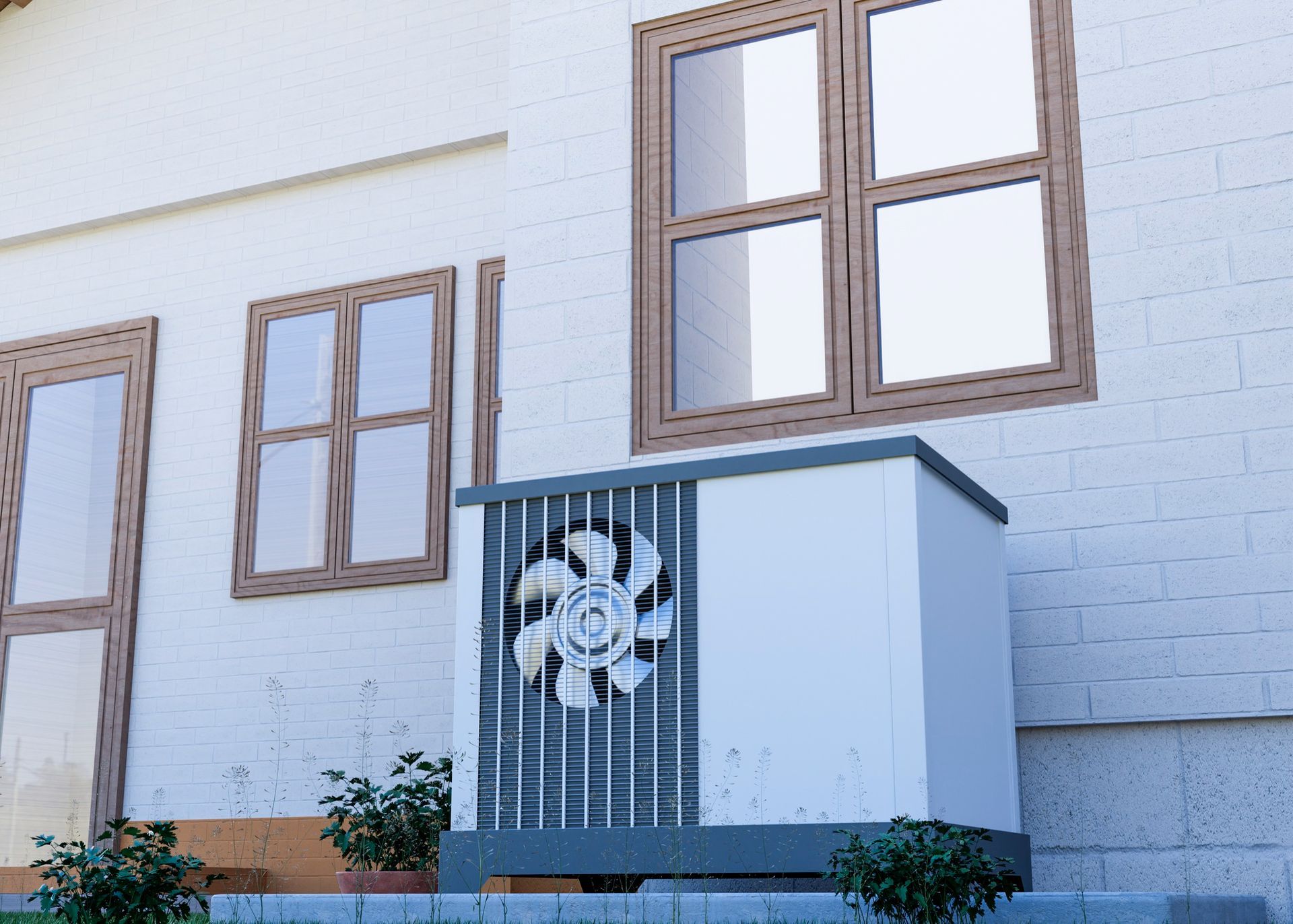Efficient DIY Guide: Mastering Water Heater Thermostat Replacement in 5 Easy Steps
A well-functioning water heater thermostat is crucial for optimizing your home's energy efficiency and ensuring a reliable supply of hot water. In this DIY guide on water heater thermostat replacement, we'll delve into the essential steps to master this task easily. Beyond the convenience of having a consistent hot water supply, replacing your water heater thermostat offers substantial benefits, including notable cost savings and enhanced energy efficiency.
By understanding the significance of maintaining a properly functioning thermostat, homeowners can not only avoid potential utility bill spikes but also contribute to a more sustainable and eco-friendly household. Join us as we explore the cost-effective and efficient process of water heater thermostat replacement, empowering you to take control of your home's energy consumption and enjoy the rewards of a well-maintained heating system.
The Importance of a Well-Functioning Water Heater Thermostat
The thermostat plays a pivotal role in optimizing water heater performance by regulating temperature levels for efficient operation. It acts as the control center, ensuring that your heating system delivers the desired warmth while avoiding unnecessary energy consumption. However, a faulty thermostat can disrupt this balance, leading to energy wastage and subsequently higher utility bills. In this context, understanding the critical role of the thermostat becomes essential in maintaining a cost-effective and eco-friendly home.
Regular maintenance and timely replacement are key to preventing potential issues that may arise from thermostat malfunctions. By emphasizing the importance of routine checks and replacements, homeowners can not only enhance their water heater's efficiency but also contribute to a more sustainable and economical use of energy resources, ultimately resulting in long-term cost savings.
Signs Your Water Heater Thermostat Needs Replacement
Identifying common symptoms indicative of thermostat malfunction is crucial for homeowners seeking to maintain optimal water heater performance. Irregular water temperatures, inconsistent heating cycles, or unexpected fluctuations are telltale signs that the thermostat may be experiencing issues. Recognizing these early warning signs is essential in preventing potential damage to the water heater system.
Early intervention can mitigate the risk of more significant problems, ensuring the longevity of the appliance and avoiding costly repairs. Proactive monitoring emerges as a key strategy for homeowners to uphold optimal water heater performance. Regularly assessing the thermostat's functionality and addressing any arising issues promptly not only guarantees a reliable supply of hot water but also contributes to energy efficiency, resulting in a more sustainable and cost-effective home heating solution. Stay vigilant and proactive to enjoy uninterrupted warmth and efficiency from your water heater.
Common Symptoms of Thermostat Malfunction:
- Irregular water temperatures
- Inconsistent heating cycles
- Unexpected fluctuations
Early Warning Signs for Prevention:
- Audible clicking or popping sounds
- Delayed response to temperature adjustments
- Visible corrosion on thermostat components
Importance of Proactive Monitoring:
- Enhances water heater longevity
- Avoids costly repairs
- Contributes to energy efficiency
Gathering the Right Tools and Materials
Creating a comprehensive checklist for essential tools and materials is the first step towards a successful water heater thermostat replacement project. This ensures that you have everything you need before starting the process, saving time and minimizing potential setbacks.
Checklist for Water Heater Thermostat Replacement:
- Adjustable wrench
- Screwdrivers (Phillips and flat-head)
- Voltage tester
- Pipe wrench
- Non-contact thermometer
- Replacement thermostat
- Replacement heating element (if needed)
- Teflon tape
- Pipe sealer
- Bucket or towels for potential water spills
In our DIY guide, we not only provide a checklist but also explore budget-friendly options for each item, offering insights on where to purchase them without breaking the bank. Emphasizing the importance of having the right equipment is crucial, as using improper tools may lead to complications during the replacement process.
Budget-Friendly Options and Where to Purchase:
- Local hardware stores
- Online retailers (e.g., Amazon, Home Depot)
- Discount home improvement centers
We guide you through the selection of each tool, highlighting their specific roles and how they contribute to a smooth and efficient thermostat replacement. By understanding the significance of a well-prepared toolkit, homeowners can confidently undertake the project, promoting a hassle-free and cost-effective DIY experience. Get ready to master water heater thermostat replacement with the right tools and a well-prepared checklist at your disposal.
Step-by-Step Guide to Water Heater Thermostat Replacement
Embark on a seamless journey of water heater thermostat replacement with our user-friendly step-by-step guide. We break down the entire process into five easy-to-follow steps, ensuring that even those new to DIY projects can confidently navigate through each phase.
Step-by-Step Guide to Water Heater Thermostat Replacement:
- Turn off Power: Begin by turning off the power supply to the water heater at the circuit breaker.
- Drain the Tank: Safely drain the water heater tank to prevent leaks and facilitate thermostat access.
- Remove the Old Thermostat: Carefully detach the old thermostat, paying attention to wiring connections.
- Install the New Thermostat: Connect and secure the new thermostat in place, ensuring proper wiring.
- Test and Adjust: Turn the power back on, test the water temperature, and make any necessary adjustments.
Each step is accompanied by detailed instructions, offering clear and concise guidance on what needs to be done at every stage. Our commitment to clarity is further reinforced by the inclusion of visual aids, such as images and diagrams, strategically placed throughout the guide.
These visuals serve as valuable companions, enhancing your understanding of the replacement process and making it accessible for visual learners. Whether you're a seasoned DIY enthusiast or a first-time replacer, our comprehensive guide guarantees a successful water heater thermostat replacement, empowering you to take control of your home's heating system with confidence and expertise.
Top Mistakes to Avoid During Water Heater Thermostat Replacement
Navigating the waters of water heater thermostat replacement requires steering clear of common pitfalls that homeowners often encounter. In this guide, we identify the top mistakes made during thermostat replacement, shedding light on potential challenges. From overlooking safety measures to mishandling wiring connections, understanding these errors is crucial for a successful DIY experience.
Common Mistakes to Avoid:
- Neglecting to turn off the power supply
- Failing to drain the water heater tank adequately
- Incorrectly identifying or reconnecting thermostat wires
- Overlooking safety precautions, such as using the wrong tools
To ensure a smooth DIY experience, we provide invaluable tips on how to avoid these pitfalls. Emphasizing the importance of careful and precise execution, our guide encourages homeowners to take their time, double-check connections, and follow each step diligently. By steering clear of these common mistakes, you'll embark on a thermostat replacement journey with confidence, achieving optimal results and a hassle-free heating system.
Energy-Efficient Thermostats: A Smart Upgrade for Your Water Heater
Step into the future of home energy management with an exploration of the latest in energy-efficient thermostat technology for water heaters. Our guide delves into the advancements that make modern thermostats smart and eco-friendly. Discover how upgrading to these innovative options can lead to substantial long-term savings on utility bills, all while reducing your environmental impact. By optimizing heating efficiency and allowing for precise temperature control, these thermostats contribute to a greener and more sustainable home. We discuss the benefits of investing in these modern solutions, from enhanced programmability to compatibility with smart home systems. Join us in embracing the evolution of water heater thermostat technology, and take a proactive step towards a more energy-efficient and environmentally conscious household. Upgrade your thermostat, upgrade your efficiency.
Success Stories: Real Experiences with Water Heater Thermostat Replacement
Embark on a journey of inspiration as we share real success stories from individuals who have successfully mastered water heater thermostat replacement. Through firsthand accounts, readers gain valuable insights into the challenges faced and triumphs achieved during the DIY thermostat replacement process. Accompanied by compelling before-and-after testimonials, these stories showcase the positive impacts of a well-executed replacement, from improved energy efficiency to enhanced hot water supply.
Key Features of Success Stories:
- Diverse Experiences: Stories from individuals of various DIY skill levels and backgrounds.
- Tangible Benefits: Testimonials illustrating tangible improvements post-replacement.
- Learning Moments: Challenges faced and lessons learned, providing valuable takeaways.
These success stories serve as motivational fuel for readers, highlighting the achievable success of DIY thermostat replacement. By learning from the experiences of others, homeowners can approach their own projects with confidence, knowing that a well-executed replacement brings tangible benefits and a sense of accomplishment.
How much does it cost to replace a thermostat in a hot water heater?
The cost of replacing a thermostat in a hot water heater varies based on factors such as the type of thermostat, the brand, and whether you hire a professional or opt for a DIY approach. On average, the cost of a thermostat itself can range from $20 to $200, with higher-end smart thermostats generally being more expensive. If you hire a professional plumber or technician for the replacement, labor costs can add an additional $50 to $150 per hour. DIY enthusiasts can save on labor costs but should consider the initial investment in tools and equipment. It's advisable to compare prices, consider the type of thermostat that fits your needs, and evaluate whether professional installation is warranted.
How Do I Know if My Water Heater Thermostat is Bad?
Identifying a malfunctioning water heater thermostat involves observing several indicators. Common signs of a faulty thermostat include inconsistent water temperatures, lukewarm or excessively hot water, or a complete lack of hot water. Unusual noises from the water heater, such as popping or hissing sounds, can also signal thermostat issues. Additionally, if you notice frequent cycling on and off or if the water heater doesn't respond to temperature adjustments, it may be a sign of thermostat malfunction. Using a voltage tester to check for power supply issues or consulting a professional plumber for a thorough inspection can help confirm if your water heater thermostat is indeed faulty.
Conclusion
As we conclude this comprehensive guide on water heater thermostat replacement, brought to you by All Brands Heating and Cooling, let's recap the key points covered. We've explored the importance of a well-functioning thermostat, identified common issues, and provided a step-by-step guide for a seamless DIY replacement. Armed with the right tools, a well-prepared checklist, and insights into potential pitfalls, readers are now equipped to confidently undertake this essential task.
All Brands Heating and Cooling encourages homeowners to embrace the DIY spirit and take control of their home's heating efficiency. By mastering water heater thermostat replacement, you not only ensure a reliable hot water supply but also contribute to long-term cost savings and environmental sustainability. Remember, the benefits extend beyond the initial project—this newfound expertise empowers you to efficiently manage your home's comfort. Take the plunge, embark on this journey with confidence, and experience the lasting rewards of a well-maintained water heater.


